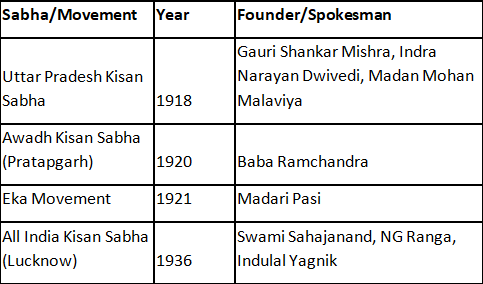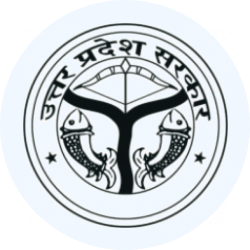Formation of Indian National Congress and National Movement in Uttar Pradesh | Course for UPPSC Preparation - UPPSC (UP) PDF Download
The Indian National Congress (INC) was indeed founded in 1885 as the Indian National Union in Bombay. A.O. Hume, a retired British civil servant, played a key role in its formation. The name was later changed to the Indian National Congress during its first session. The INC played a crucial role in the Indian independence movement.
The initial sessions of the Indian National Congress were held in different locations, including Bombay (now Mumbai). However, as you mentioned, there were a significant number of sessions held in Uttar Pradesh. The sessions held in Uttar Pradesh, along with the respective years and presidents, are as follows:
- 1888 - George Yule in Allahabad (Prayagraj)
- 1892 - Womesh Chandra Bonnerjee in Allahabad (Prayagraj)
- 1899 - Ramesh Chandra Dutt in Lucknow
- 1905 - Gopal Krishna Gokhale in Varanasi
- 1910 - William Wedderburn in Allahabad (Prayagraj)
- 1916 - Ambica Charan Mazumdar in Lucknow
- 1925 - Sarojini Naidu in Kanpur
- 1936 - Pt. Jawaharlal Nehru in Lucknow
- 1946 - J.B. Kripalani in Meerut
These sessions provided a platform for leaders to discuss and shape the political direction of the Indian National Congress, contributing to the larger freedom movement in India. Many prominent leaders emerged from these sessions, and the INC played a crucial role in advocating for India's independence from British rule.
National Movements in Uttar Pradesh
The various national movements organized in Uttar Pradesh included the Lucknow Pact, Peasant Movements, Khilafat Movement, Non-Cooperation Movement, Revolutionary Movement, Quit India Movement, and more. These movements are detailed as follows:
Lucknow Pact
- A significant stride towards Hindu-Muslim unity, the Lucknow Pact was established in 1916 between the Muslim League and the Congress.
- Anti-British sentiments were heightened among Muslims following the war between Britain and Turkey.
Peasant Movements
- In 1918, the Uttar Pradesh Kisan Sabha was formed with the efforts of Gauri Shankar Mishra, Indra Narayan Dwivedi, Madan Mohan Malaviya, Kadam Singh, and Nana Saheb.
- On October 17, 1920, Baba Ramchandra organized the Awadh Kisan Sabha in Pratapgarh, with prominent leaders including Gaurishankar Mishra, Jawaharlal Nehru, Mata Badal Pandey, Devanarayan Pandey, and Kedar Pandey.
- A massive rally of Awadh peasants was held in Ayodhya from December 20 to 24, 1920.
Eka Movement
- Initiated in 1921 by Madari Pasi in Northern regions (Hardoi, Bahraich, Sultanpur, and Sitapur) of Uttar Pradesh, the Eka Movement was a Peasant Movement.
- The primary cause was the exorbitant rent, often exceeding 50% of the recorded rent in some areas. It involved small landowners dissatisfied with the heavy land revenue imposed by the British.
- In support of these landowners, the Nai-Dahobi Bandh Movement was organized in the Pratapgarh district of Uttar Pradesh.
- By March 1922, due to severe British repression, the Eka Movement came to an end.
Kisan/Peasant Movements in Uttar Pradesh
Khilafat Movement
- On June 20, 1920, a Khilafat Committee meeting was held in Allahabad (Prayagraj) under Gandhiji's leadership, where the proposal for the Khilafat Movement was passed.
- Gandhiji perceived this as an "opportunity of uniting Hindus and Muslims as would not arise in a hundred years."
Non-Cooperation Movement:
- On 5th February 1922, during the Non-Cooperation Movement, a group of Satyagrahis headed to a public rally addressed by national leaders.
- The police intervened by assaulting and firing at the Satyagrahis, resulting in an uncontrollable situation where an angry mob killed 22 constables.
- In response to the Chauri-Chaura incident, Mahatma Gandhi was dismayed and withdrew the Non-Cooperation Movement on 12th February 1922.
Swaraj Party:
- Formed in 1923 by Chittranjan Das and Motilal Nehru, the Swaraj Party aimed to fill the void left by the cessation of the Non-Cooperation Movement.
- Chittranjan Das served as the President, and Motilal Nehru as the Secretary. Notable leaders like Vithalbhai Patel, Malaviyaji, and MR Jayakar were part of this party, which contested the Legislative Assembly elections of 1923.
- Following Chitranjan Das's death on 16th June 1925, a new party called Swatantra Congress Party was established by Madan Mohan Malaviya and Lala Lajpat Rai.
Revolutionary Movement:
- The Hindustan Republic Association was founded on 3rd October 1924 in Kanpur by Revolutionary Nationalists, with Chandra Shekhar Azad as the main leader.
- The organization's head office was in Agra, and notable members included Sachindra Nath Sanyal and Ram Prasad Bismil.
- The Association evolved into the Hindustan Socialist Republic Association during a conference in Feroz Shah Kotla, Delhi, in 1928.
- The Kakori train robbery occurred on 9th August 1925, leading to the Kakori Conspiracy Case and the execution of Ashfaqulla Khan, Roshan Singh, and Ram Prasad Bismil.
- On 8th April 1929, Bhagat Singh and Batukeshwar Dutt threw a bomb inside the Central Legislative Assembly, an act facilitated by Jay Kapur and Shiv Verma.
- Chandrashekhar Azad died in an encounter with the police at Alfred Park in Allahabad (Prayagraj) on 27th February 1931.
Civil Disobedience Movement:
- Initiated by Mahatma Gandhi on 6th April 1930, the Civil Disobedience Movement aimed at achieving complete independence.
- People in Uttar Pradesh actively participated by refusing to pay various taxes to the British Government.
- In 1930, a tax refusal movement was launched in Allahabad (Prayagraj) by Jawaharlal Nehru, JP Narayan, and Lal Bahadur Shastri.
- Civil Disobedience Movement persisted until early 1931 following Gandhi's release from jail, culminating in the signing of the Gandhi-Irwin Pact on March 5, 1931.
As for the Quit India Movement:
- The Quit India proposal was ratified on August 7-8, 1942.
- On the morning of August 9, 1942, the entire Congress organization members were arrested.
- Gandhi was held in the Aga Khan Palace in Pune, while Nehru was incarcerated in Naini Jail in Allahabad (Prayagraj).
- Government officials were detained, and a provisional government was established in Ballia under the leadership of 'Chittu Pandey.'
- On August 16, 1942, protesters liberated prisoners by assaulting Ballia jail.
- Ballia earned the moniker 'Baghi Ballia' (Rebel Ballia) for its pivotal role in the freedom movement.
- Post-independence, the United Provinces were designated as Uttar Pradesh, boasting the highest number of seats in the Lok Sabha in 1950.
|
117 videos|362 docs|105 tests
|
















